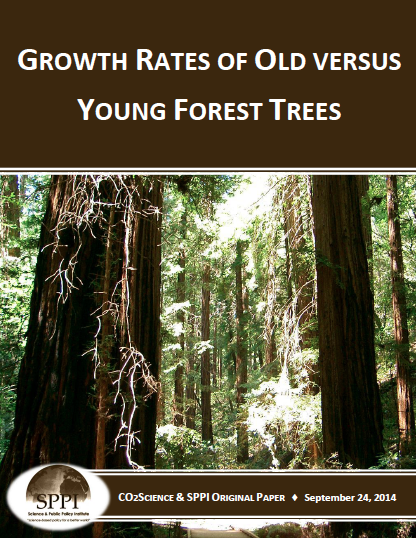News / Science & Technology
Growth Rates of Old versus Young Forest Trees

The planting and preservation of forests has long been acknowledged to be an effective and environmentally-friendly means for slowing climate-model-predicted CO2-induced global warming. This prescription for moderating potential climate change is based on two well established and very straightforward facts: (1) the carbon trees use to construct their tissues comes from the air, and (2) its extraction from the atmosphere slows the rate of rise of the air's CO2 content.
Although simple enough that a child can understand it, this potential partial solution to the putative global warming problem has been under attack for several years by people who seek to address the issue solely on the basis of forced reductions in anthropogenic CO2 emissions (see Pearce, 1999). The tack they take in this campaign is to claim that carbon sequestration by forests is only viable when forests are young and growing vigorously; for as forests age, according to the regulatory-minded pundits, they gradually lose their carbon sequestering prowess, such that forests more than one hundred years old become essentially useless for removing CO2 from the air, as they claim that such old and decrepit stands yearly lose as much CO2 via respiration as what they acquire via photosynthesis.
As with all things, thankfully, real-world data typically tell the truth. So what do we learn about the matter from actual measurements made on older real-world trees?
